1839 Kilsyth Revival (55 revivals)


Introduction
A leading character in the 1839 Kilsyth, Scotland, Revival was William Chalmers Burns (April 1, 1815 – April 4, 1868). Other leaders in the revival were close acquaintances of Burns, all of them young men in their 20s or early 30s: Robert Murray McCheyne, Andrew and Horatius Bonar, among others.
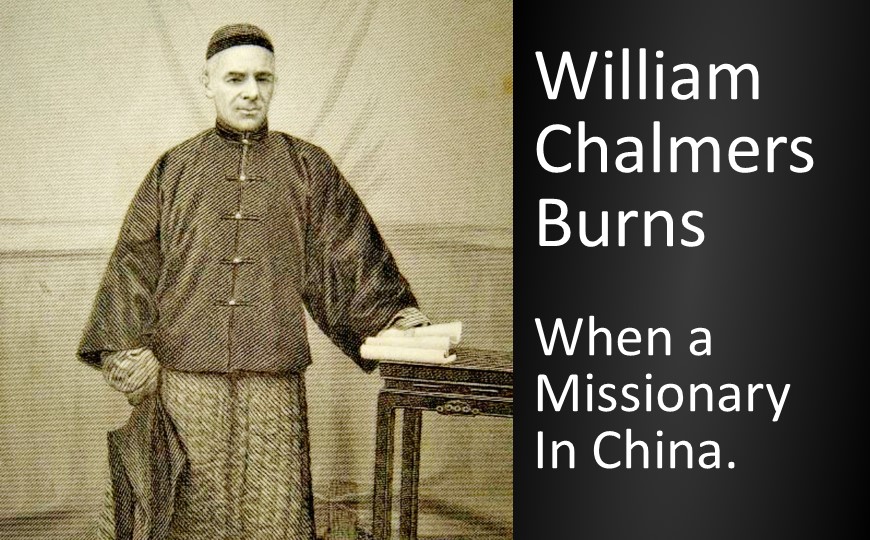

Andrew and Horatious Bonar
Burns had recently finished his ministerial studies and received his license to preach from the Presbyterian Church of Scotland on March 27, 1839. It was in April of that same year, at age 24, that he was invited to serve as an interim pastor at the prestigious 1,100-member St. Peter’s Church in Dundee. The pastor of St. Peter’s at the time was the 25-year-old Robert Murray McCheyne. McCheyne and a small group of other ministers were departing for Palestine in April of 1839, to establish a mission among the Jews. It was after McCheyne’s departure to Palestine, on April 14, that Burns stepped into the pulpit at St. Peter’s Church and began his work there.
Though the revival began in the small town of Kilsyth, it also made a tremendous impact in the city of Dundee, as well as throughout all of Scotland.
Extraordinary Prayer & Preparing for Revival
Revivals can almost always be traced back to intense and extraordinary prayer by a small handful of people. The revival that began at Kilsyth was no different.
Due to the decrease in godliness among the congregation at Kilsyth, prayer for revival was intentionally commenced on May 13, 1832, seven years before it happened. This prayer was accompanied by sermons on the topic, as well as reading of accounts of previous revivals. The inspiration behind the heightened focus on prayer was W.C. Burns’ father, William Burns Sr., who happened to be the minister at the church in Kilsyth. Williams Burns Sr. was often mentioning what had happened in Kilsyth in 1742, when a revival took place under the ministry of James Robe.
Burns Sr. used the approaching 100-year anniversary of the 1742 Kilsyth revival as a tool to generate prayer for a similar movement at that time. During one of his addresses, Burns Sr. called out:
God is not dead! The gospel has lost none of its power! It is we Christians who have lost our power with God. God is able right now to give us the same times of blessing that he gave this church one hundred years ago and even greater!
Burns Sr. then asked the people,
Are you willing to let God search your hearts to see that there are no sins which grieve God and keep back the blessing?
Following that address, many began to humble themselves before God in repentance.
The revival preparation in the Scottish city of Dundee was no different. The pastor of St. Peter’s Church in Dundee, Robert Murray McCheyne, would use the Thursday prayer meetings to read accounts of previous revivals to stimulate and build faith for a similar move of God.
Prior to the day when the Holy Spirit was poured out on Kilsyth, intercessors in that town had gathered to spend the entire evening in prayer—specifically travailing for souls.
When these intercessors came to the meeting the following day, they didn’t have mere hope that God’s power would be manifested in an extraordinary way, they were certain it would happen, and were anticipating it.
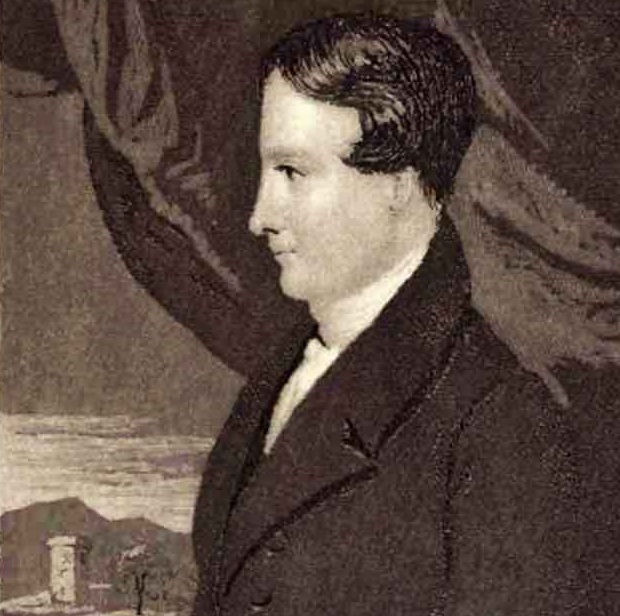
Robert Murray McCheyne–Pastor of St. Peter’s Church in Dundee
What Happened
NOTE: This revival began with scheduled “revival services” lasting several days, and it evolved into a genuine outpouring of the Holy Spirit that spread throughout Scotland over a period of four years.
William Burns had already begun his interim ministry at St. Peter’s Church in Dundee in April, but he returned to Kilsyth in late July 1839 to participate in the Communion Season and spend time with his family, as his father, William Burns Sr., was the pastor of the church there. The Communion Season was the Scottish Presbyterian tradition which involved several days of prayer and church services leading up to the taking of communion. (In the United States the Communion Season evolved into what can now be likened to “camp meetings”.)
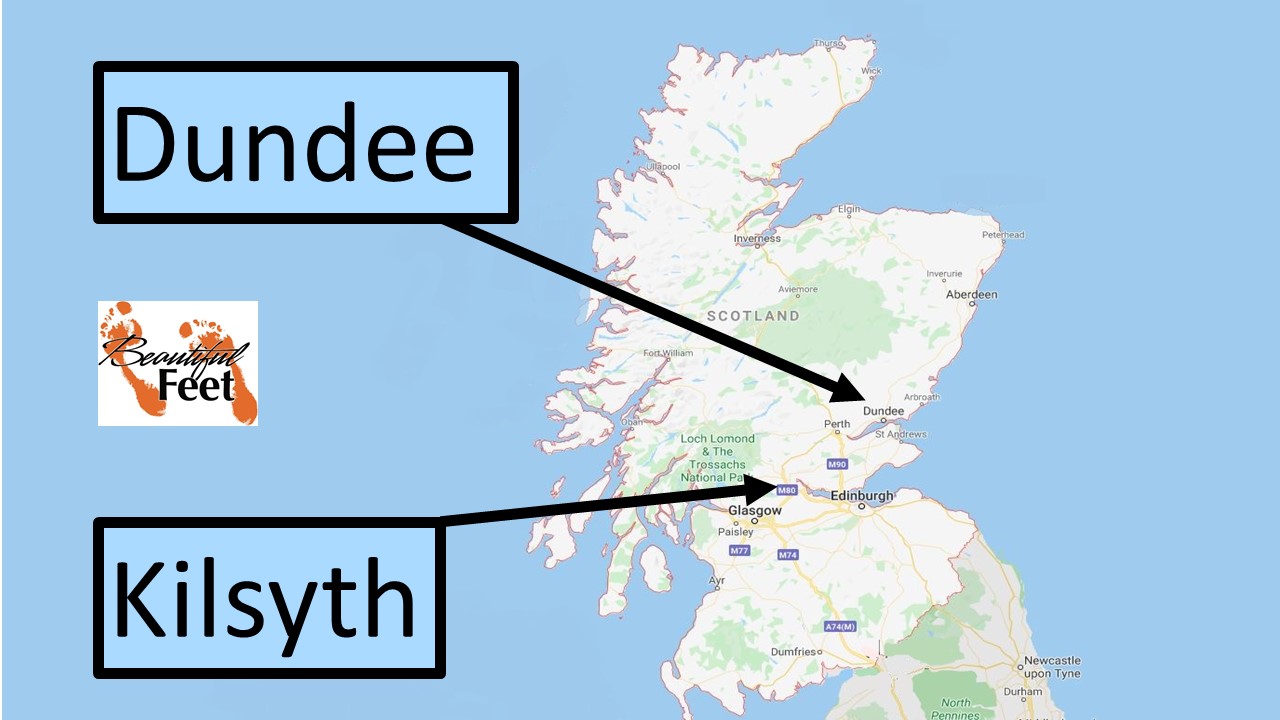
The revival’s center was these two locations
Sequence of Events
Burns arrived in Kilsyth late on July 16, 1839.
► On Friday evening, July 19, W.C. Burns preached in Kilsyth.
► On Saturday evening, July 20, Burns preached in Banton, the village one mile to the northeast of Kilsyth.
► On Sunday evening, July 21, Burns again preached in Kilsyth.
By this time Burns’ preaching had given him significant notoriety, as comments from esteemed ministers in the area acknowledged that there was a unique anointing resting on that young man.
To reach those they knew wouldn’t darken the doors of a church, it was announced that Burns would preach Tuesday morning in the open air at the marketplace prior to his return to his ministry at St. Peter’s Church in Dundee.
► That Tuesday morning, July 23, a large crowd assembled at the marketplace, and this was how Burns described those who gathered: “the most abandoned of our population.” In their ordinary street clothes, they gathered, but due to rain, the 1,400-strong crowd was led to the church to listen to Burns’ sermon. Burns commented as to what happened as the sermon began:
I felt my own soul moved in a manner so remarkable that I was led…, to plead with the unconverted before me instantly to close with God’s offer of mercy, and continued to do so until the power of the Lord’s Spirit became so mighty upon their souls as to carry all before it, like the rushing mighty wind of Pentecost. Suddenly as God’s Spirit moved in their midst, many broke forth simultaneously in weeping and wailing, tears and groans, intermingled with shouts of joy and praise from some of the people of God. Some were screaming out in agony; others, and among these strong men, fell to the ground is if they have been dead; and such was the general commotion, that after repeating for some time the most free and urgent invitations of the Lord to sinners, I was obliged to give out a psalm, which was soon joined by a considerable number, our voices being mingled with the mourning groans of many prisoners sighing for deliverance.
That morning service lasted five hours, and it was announced that there would be another service that evening at 6:00 PM, and as it turned out, services were held nightly, often with crowds over 4,000 assembling. This level of fervor continued for weeks.
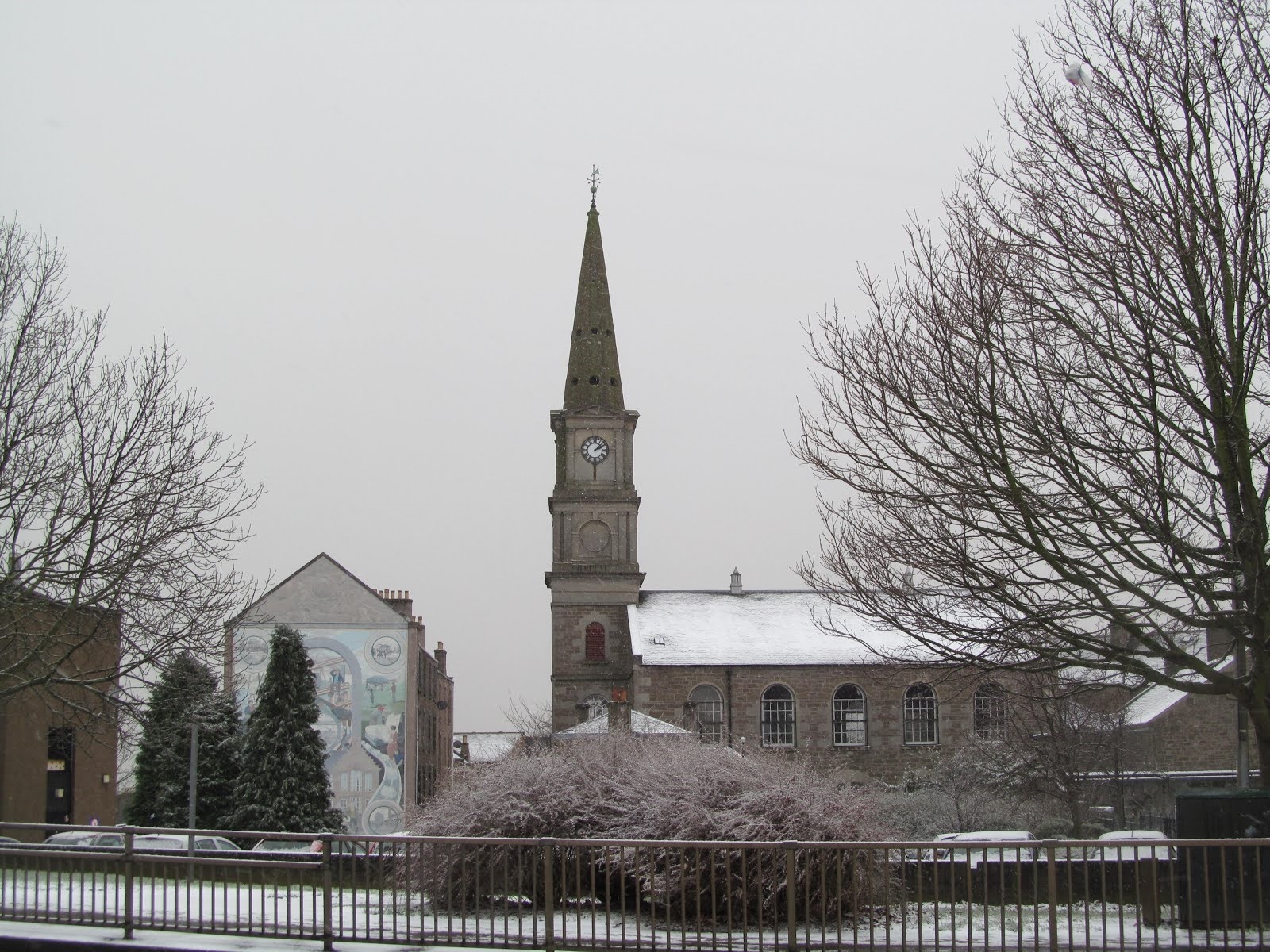
St. Peter’s Free Church in Dundee
Revival Spreads to Dundee
Burns returned to his duties in Dundee at St. Peter’s Church, on August 8, 1839. During Burns’ first few months at St. Peter’s Church, he had already seen some stirrings of the Holy Spirit, but he was about to see the same as what had happened in Kilsyth be repeated in Dundee, and throughout Scotland.
Upon his return to Dundee, at the Thursday prayer meeting at St. Peter’s Church, he explained why he had been delayed in Kilsyth. He told them the story of the marvelous things that the Lord was doing there, and after prayer he invited any that felt the need of an outpouring of the Spirit to convert them to remain behind.
There were around one hundred that remained, and after Burns had spoken to them,
Suddenly the power of God seemed to descend, and all were bathed in tears.
Another meeting was scheduled for the next night, and it had similar results, with a vast crowd wanting more of God. This was Burns’ description of the sight:
It was like a pent-up flood breaking forth; tears were streaming from the eyes of many, and some fell on the ground, groaning, and weeping, and crying for mercy.
From that Friday night onwards, meetings were held every day for the next three months, and it seemed that the whole city was touched. Burns himself tells us that the church was so crowded every night that many had to be turned away and that after every service there were throngs of people remaining behind for prayer and counsel.
A Kilsyth eyewitness from this time wrote:
The web became nothing to the weaver, nor the forge to the blacksmith, nor his bench to the carpenter, nor his furrow to the ploughman. They forsook all to crowd the churches and prayer meetings. There were nightly sermons in every church, household meetings for prayer in every street, twos and threes in earnest conversation on every road and single wrestlers with God in the solitary places of the field and glen [valley].
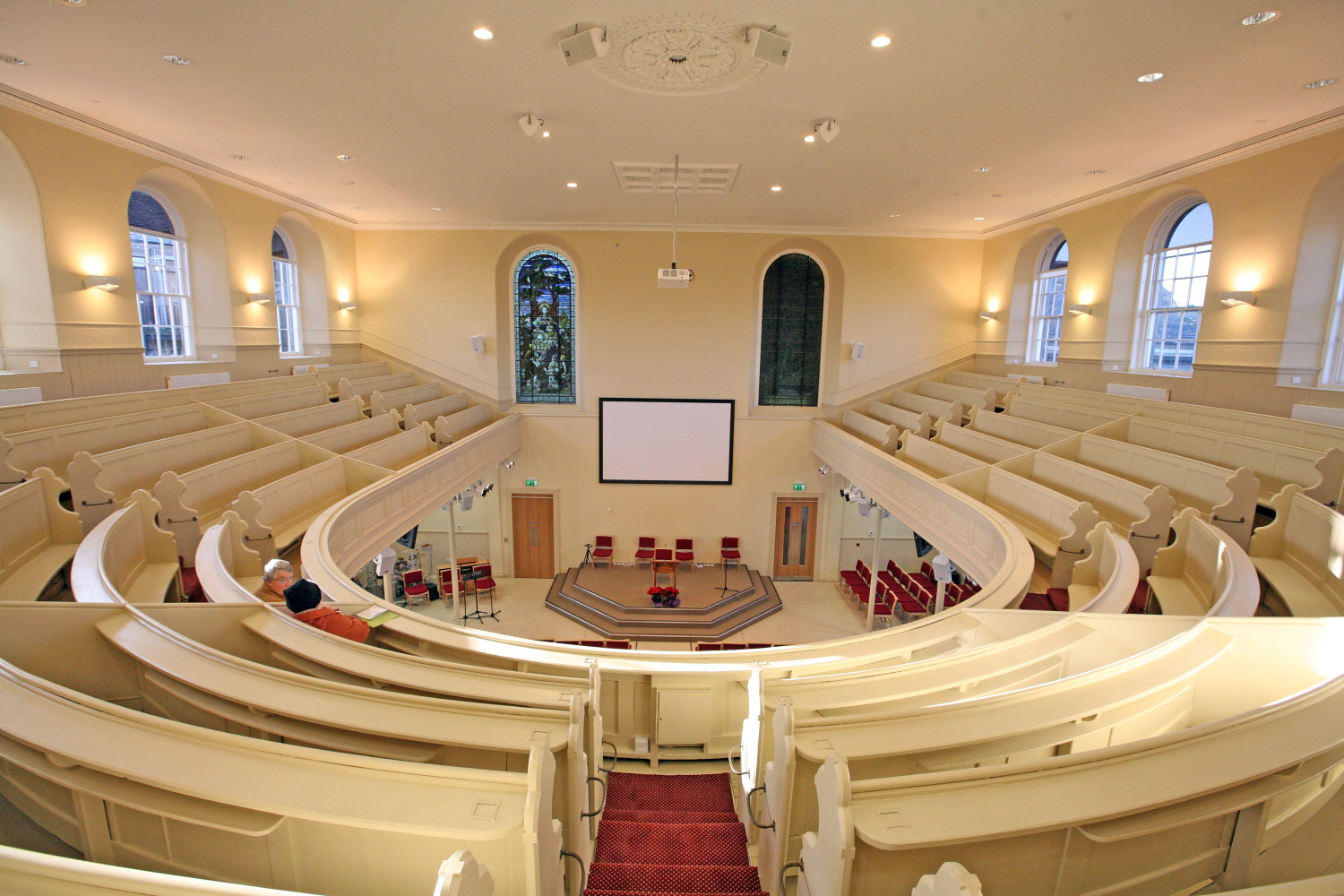
Inside St. Peter’s Church in Dundee today
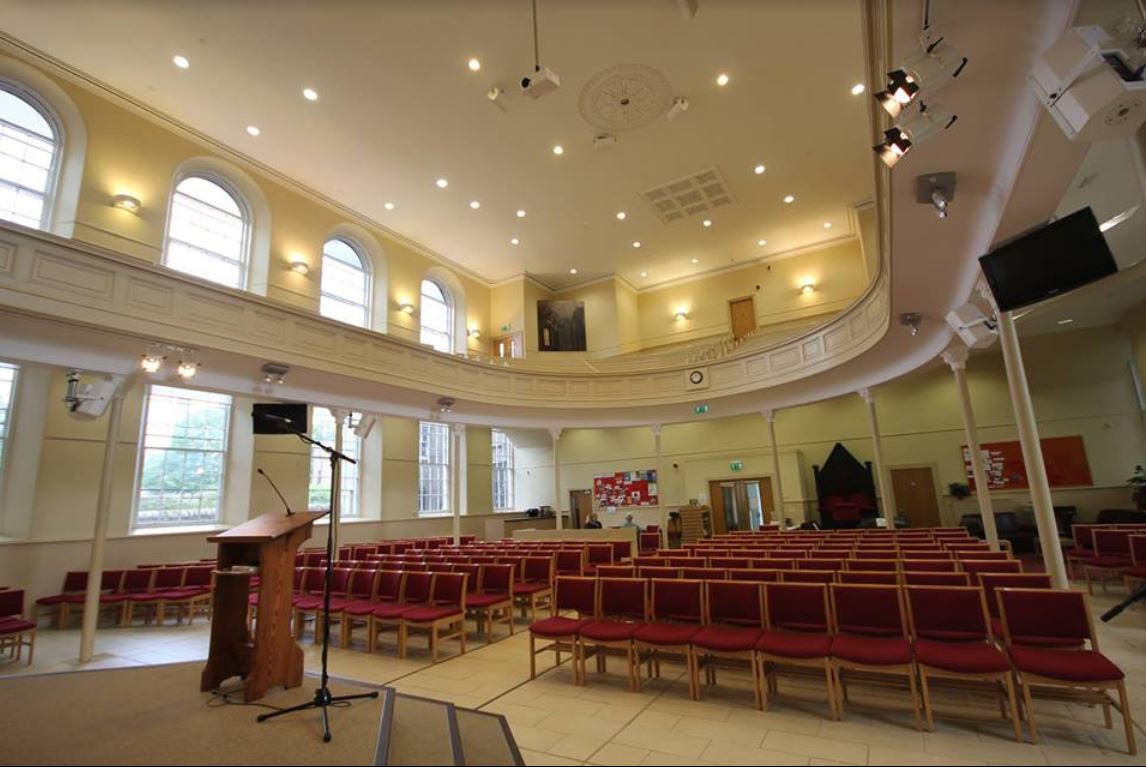
September Communion Season in Kilsyth
On September 22, 1839, another Communion Season was held in Kilsyth. The number that assembled was between 12,000 and 15,000, and the revival fires kept burning.
Return of Robert Murray McCheyne
When McCheyne returned from his mission to Palestine, in November 1839, he resumed his role as pastor of St. Peter’s Church. Burns was then free from his duties there and began preaching throughout Scotland. In every location he visited, the scenes witnessed at Kilsyth and Dundee became commonplace.
In addition to preaching in the open air and in churches, Burns was also engaged in other areas of ministry:
► With children
► In military barracks, speaking with soldiers and handing out tracts.
► In jails
► Among the sailors on the wharf
► In the insane asylums
► In orphanages and hospitals

Some of the locations in Scotland where Burns and others preached, and where local revivals started.
Criticism
As what happens in every revival, suspicion, jealousy, and persecution came, primarily from within the Church. That has been Satan’s mode of operation throughout history. Burns was also bitterly attacked by newspapers. The revival overall became the object of ridicule among many of the local population.
The Committee of Inquiry
The level of spiritual power manifested in extraordinary ways during a genuine revival is not always understood or welcomed by some who are unfamiliar with it, or by those who are content with the status quo. This happened to be the case with some of the ministers in the Church of Scotland. They found it necessary to form a committee to investigate Burns and the revival. This required Burns to be present before the committee to answer a long list of questions, as well as answer other questions in writing.
It appeared as though the youthfulness of most of the ministers leading the revival was a source of jealousy for the older ministers.
Results of the Revival
► Upwards of 4,000 would gather at different locations (Between 12,000-15,000 at the September 1839 Communion Season in Kilsyth).
► Business in the town was suspended.
► Political discussions came to an end, as only eternal topics were on people’s minds.
► Prayer meetings for all ages sprang up everywhere in the village and the surrounding area—in homes and churches. Some of these were led and attended by only children. When Robert Murray McCheyne returned from his trip to Palestine, he found 39 regular prayer meetings taking place.
► The revival affected mostly the youth, and it was led by young ministers.
► Many young men received the call into the ministry.
► Detailed records of those professing their faith in Christ are not available, but from St. Peter’s Church alone, in the city of Dundee, there were close to 800 inquirers.
► Ministers from across Scotland arrived to assist with the influx of new converts and revived Christians.
► Services began to be conducted nightly, both in the open air and in churches.
► Thousands would gather for these times of preaching.
► Crowds flocked at the close of each service to receive extra counsel from the ministers.
► Trains from Glasgow and other towns were filled with thousands coming to participate, swelling the numbers already touched by God.
► The Glasgow Argus (newspaper) initially mocked the revival, condemning the
“extraordinary scenes” of hundreds of people calling out for mercy and fainting from the intensity of God’s presence. Later they were forced to admit that:
The excitement is indeed altogether remarkable and is deeply attracting the attention of the religious public.
► The Presbyterian Review (Church of Scotland publication) of October 1839, reported:
A whole community setting their faces to seek God! The world thrown aside, earthly interests forgotten, that eternity might be remembered. What a scene!
► People hungry for more of God would stay for hours after every service, receiving additional words of encouragement and exhortation.
► There was order and solemnity every day.
► There was a complete absence of swearing and foolish talking in the streets.
► There was singing and prayer heard coming from every house.
► All arguments and contention between previously opposed parties stopped.
► Lives previously bent on impurity and infidelity were transformed.
► Names were being added to church membership by the hundreds.
► A mighty harvest was reaped from the coal pits, public houses (pubs), weaving businesses, and throughout the valleys.
Revival Affected All Denominations
The revival wasn’t limited to the Church of Scotland. All denominations were affected. A renewed zeal for Christ was filling churches everywhere.
Manifestation of God’s Presence
Burns was a continuationist, as he believed that the manifestations of the Holy Spirit as seen at Pentecost and following, were what should be expected and looked for in every age.
► Prostrations (overcome by the presence of God: Daniel 10:1-21; (vs. 8-9); Revelation 1:17)
► Conviction of sin, leading to bitter weeping over sins committed.
► Overwhelming and exuberant joy.
Robert Murray McCheyne reported the following concerning manifestations of God’s presence:
I have heard a half-suppressed sigh rising from many a heart, and have seen many bathed in tears. At other times I have heard loud sobbing in many parts of the church, while a deep solemnity pervaded the whole audience. I have also, in some instances, heard individuals cry aloud, as if they had been pierced through with a dart.
On one occasion, for instance, when the minister was speaking tenderly on the words, “he is altogether lovely”, almost every sentence was responded to by cries of the bitterest agony. At such times I have seen persons so overcome, that they could not walk or stand alone. I have known cases in which believers have been similarly affected through the fullness of their joy.
The Revivals Decline
By early December 1839, the nightly services in Dundee came to an end, but the revival passion continued for several years to come, with Burns and others preaching in villages, towns, and cities throughout Scotland.
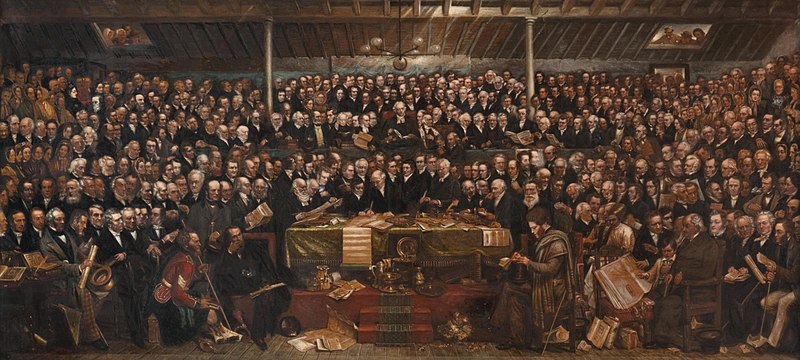
The Disruption Assembly: the 450 ministers that broke away from the Church of Scotland to start the Free Church of Scotland.
In May of 1843, 450 out of about 1,200 ministers broke away from the Church of Scotland to form the Free Church of Scotland. This division is known as the Disruption of 1843, and what it did was it “disrupted” the power and passion that had been exerted towards the conversion of sinners. Ministry in Scotland then began to change its focus from repentance and the need to be born again, to centering on those already awakened. In this environment, the revivalist Burns knew he had to move on.
Burns had always had a focus to eventually become a missionary, so with the cooling-off of the revival fires in Scotland, he spent some time preaching in Ireland, Canada, and the United States, and then departed for China to serve as a missionary in 1847. It was in China that he spent the remaining years of his life, dying of dysentery at Yingkau, China, on April 4, 1868, at the age of 53.
Sources
► Awakening: The Life and Ministry of Robert Murray McCheyne by David Robertson
► Disruption of 1843 by Wikipedia
► Evangelical Revival in Scotland by Wikipedia
► God’s Polished Arrow W.C. Burns by Michael McMullen
► Land of Many Revivals by Tom Lennie
► Narratives of the Extraordinary Work of the Spirit of God, at Cambuslang, Kilsyth by James Robe
► The 1839 Scottish Revival, video by Pastor Craig Ireland
► The Ten Greatest Revivals Ever by Elmer Towns
► Travel with Robert Murray M’Cheyne: In the Footsteps of a Godly Scottish Pastor by Derek Prime
Return to List of Revival Stories
Chet & Phyllis Swearingen
(260) 920-8248
romans1015@outlook.com
Beautiful Feet
P.O. Box 915
Auburn, IN 46706

